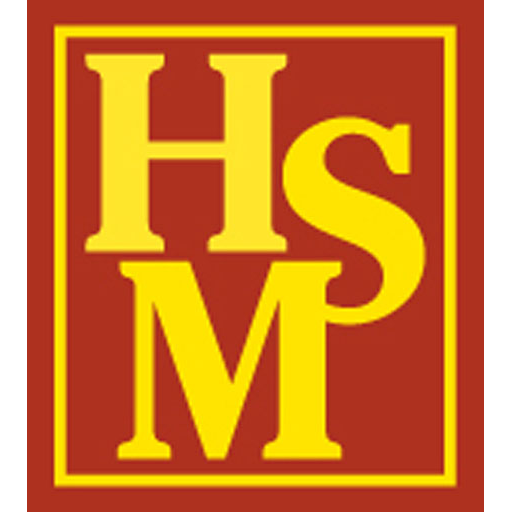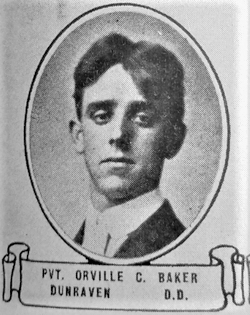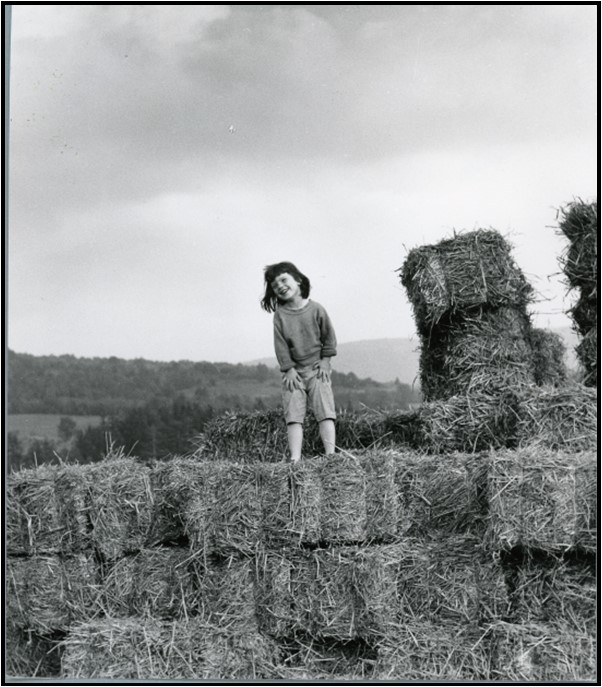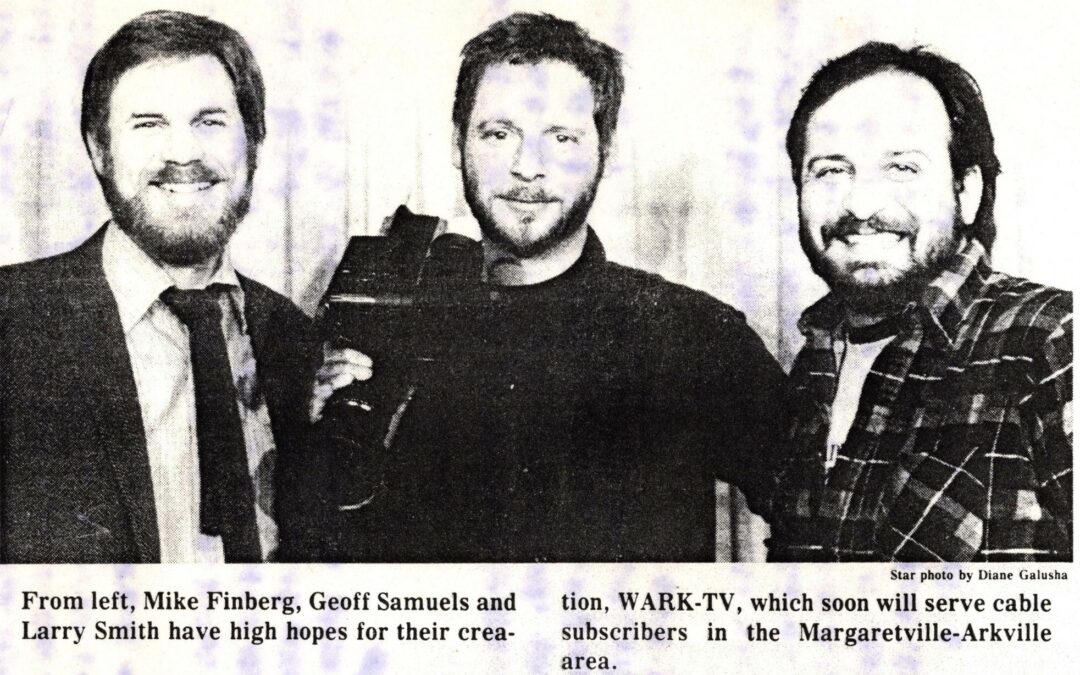
WARK: Home-grown TV
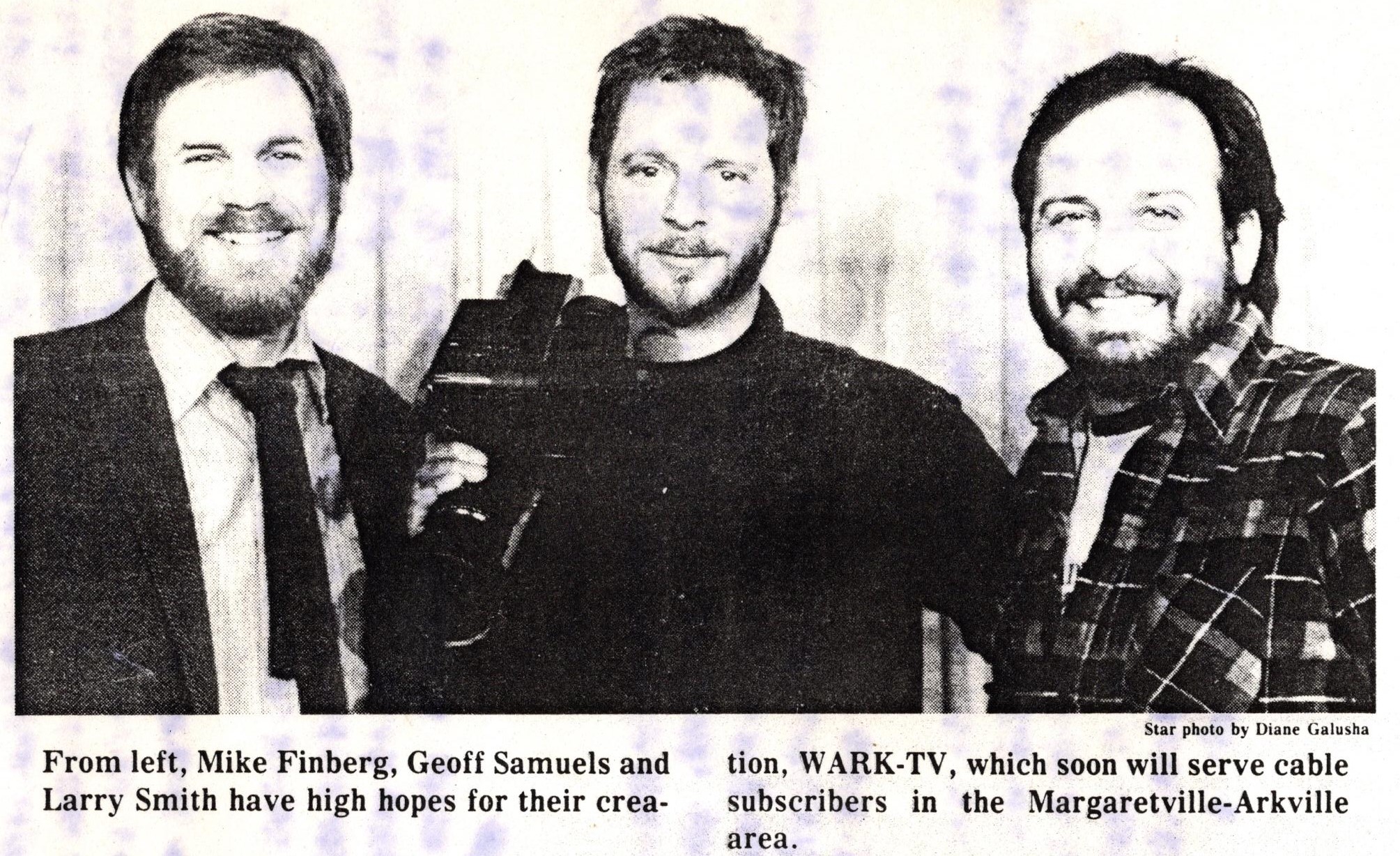
WARK: Home-grown TV
Back in the Dark Ages, before you could whip out your cell phone, shoot some video and in an instant post it on the internet for all the world to see, there was ‘local access’ cable television. In the Margaretville-Arkville area, it was known as WARK, Channel 3 on the Margaretville Tel-Vis cable network.
This was back in 1984, when Mike Finberg, Larry Smith and Geoff Samuels teamed up with Tel-Vis owner Roy George to produce and share with cable subscribers all manner of locally-generated news and entertainment. For six months the trio, and Larry’s wife Christine Cordone, dashed about the area, videotaping interviews, community events, performances, kids’ workshops, how-to shows and more. Geoff, musician and soundman, was behind the camera. Larry, a seasoned performer, and Mike, a born talker later known as party MC Buck Steel, were the interviewers. Christine, a singer and elementary school teacher, hosted special events and activities.
Larry and Christine composed and sang the WARK jingle, recorded at Geoff’s home studio. The partners sold ads and recorded commercials. And they solicited suggestions for on-air demonstrations from the public (examples offered in a sign-up form included car repair, fly fishing and belly dancing.) “Anybody who had any idea for a show, we pretty much did it,” explained Mike. (Nobody offered to belly dance, though.)
Roy George was more than willing to help, literally handing them the key to his cable kingdom. “We would take the tapes to the little building at the head of Dry Brook where the signal emanated from, unplug WSKG (public TV from Binghamton), put in our tape, and when our show was over, reconnect WSKG.”
He described it as a “handshake arrangement. No money was exchanged.” Which was a good thing, since very little money was made. “The advertising revenue didn’t offset the needs of the three partners, but it was fun, so we continued to do it for six months.”
In those six months they created an archive of now priceless videos: The Arkville Parade and Fair (WARK borrowed the fair’s specially built ark-on-wheels as its logo). Music shows hosted by Larry at the Binnekill Square Restaurant’s piano with guests like Galen Blum, Tom Pacheco, Rob Rosenblatt, Kim Wrobel and Izzy Goldstein. Cooking shows with Eric Rosen, Howard Raab and Vinnie Ammirato. (Vinnie’s paying gig was on a tugboat in New York Harbor and he also arranged for a WARK tour of the vessel.)
Christine interviewed performers in a traveling circus that came to Arkville and showed children how to make all sorts of crafts. Larry interviewed Eric Wedemeyer at the grand opening of the renovated Granary building and Mike once asked questions of Senator Daniel Patrick Moynihan. Bands and dancers at the Pine Hill Tavern, Ricci’s and the Meadowbrook brought these now fabled night spots into area living rooms.
And, presaging ‘Jeopardy,’ there was the Dictionary Game, with teams of local brainiacs trying to out-wit each other on definitions of obscure terms.
Larry estimates that 10 to 20 hours of ‘background labor” went into every hour of finished video. “It was quite an operation,” he said. “Everything was hands on, home grown.”
Subscribers to MTC Cable can watch vintage WARK video on the newest community-centered public cable channel, CatskillsAir, MTC Cable Channel 1. Advises Mike Finberg, “Prepare to see local residents without gray hair.”
